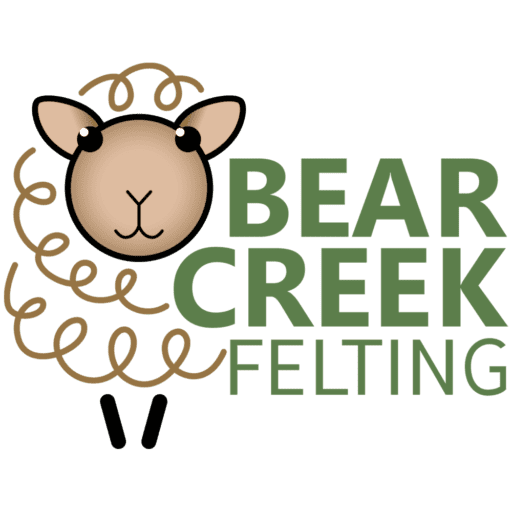 If you’ve been around and have been following up with us for a while, you would know that the wool we use in our needle felting academy is from the sheep we raise on our farm. We recently shared a blog post about shearing the wool. So, now we’re going to talk about wool skirting. This process pretty much involves removing the dirtiest wool before washing.
If you’ve been around and have been following up with us for a while, you would know that the wool we use in our needle felting academy is from the sheep we raise on our farm. We recently shared a blog post about shearing the wool. So, now we’re going to talk about wool skirting. This process pretty much involves removing the dirtiest wool before washing.
When you compare the wool that was just sheared off the sheep to a ball of roving wool that we use in our needle felting projects, you can see the big transformation. The freshly sheared wool will more than likely have a few bits of hay or straw, grease, dirt and other vegetable matter. This is why the skirting process is so important.
At our Dakota Fiber Mill at the Nome Schoolhouse, we also process wool for other customers for various uses. So, we’re always skirting wool all year round. Now, the process itself does not exactly include special equipment or technique. However, there is a grading process which involves some special techniques. Every fiber mill must be equipped with a skirting table. At our mill, we built our skirting table just how we like it. We used basic materials, such as PVC pipes, zip ties, mesh, and so on, to make our skirting table at just the right height. We also ensured that it had a wide surface area to accommodate the pounds of wool we go through at a time. You can check out our Ewetube video on How To Make Your Own Skirting Table.
One thing you might come across in your wool is wool moths. This is not good for your wool as they will eat away at it and decrease the quality. To prevent this, you can try as best as possible not to leave your wool out in the open in the barn or in open bags outdoors. Sometimes you don’t have a choice, but you can always use an animal-safe pesticide to treat your wool and the areas around your barn or mill. We use Tempo and it works great. You can also freeze the wool for a few days or wash them in hot water. All these techniques will surely get rid of the eggs, pupa and adult moth.
First, place the entire fleece on your skirting table. Pull out the wool from the area under the legs of the sheep and get rid of those fibers. The tips of this area is typically knotted and blackened, almost like tar. There’s no amount of washing that can get rid of that, so it’s completely useless. The wool from the neck and back of the sheep as well as the rear-end also tends to be very matted. So, those tend to get thrown out as well.
We like to skirt the wool while shearing and recommend you do so as well. It is not necessary to store all the extra wool you will not be using, plus when shipping to a mill for processing you are charged by the incoming weight. So, while we’re shearing, the wool is being placed directly on the skirting table, and we quickly skirt away all the waste parts before bagging them. The fleece that will be processed will not be 100% free of dirt and vegetable matter, but we will definitely get rid of the extremely dirty pieces. The extra dirt and second cuts will eventually fall out during the picking and carding processes, which occur after washing.





